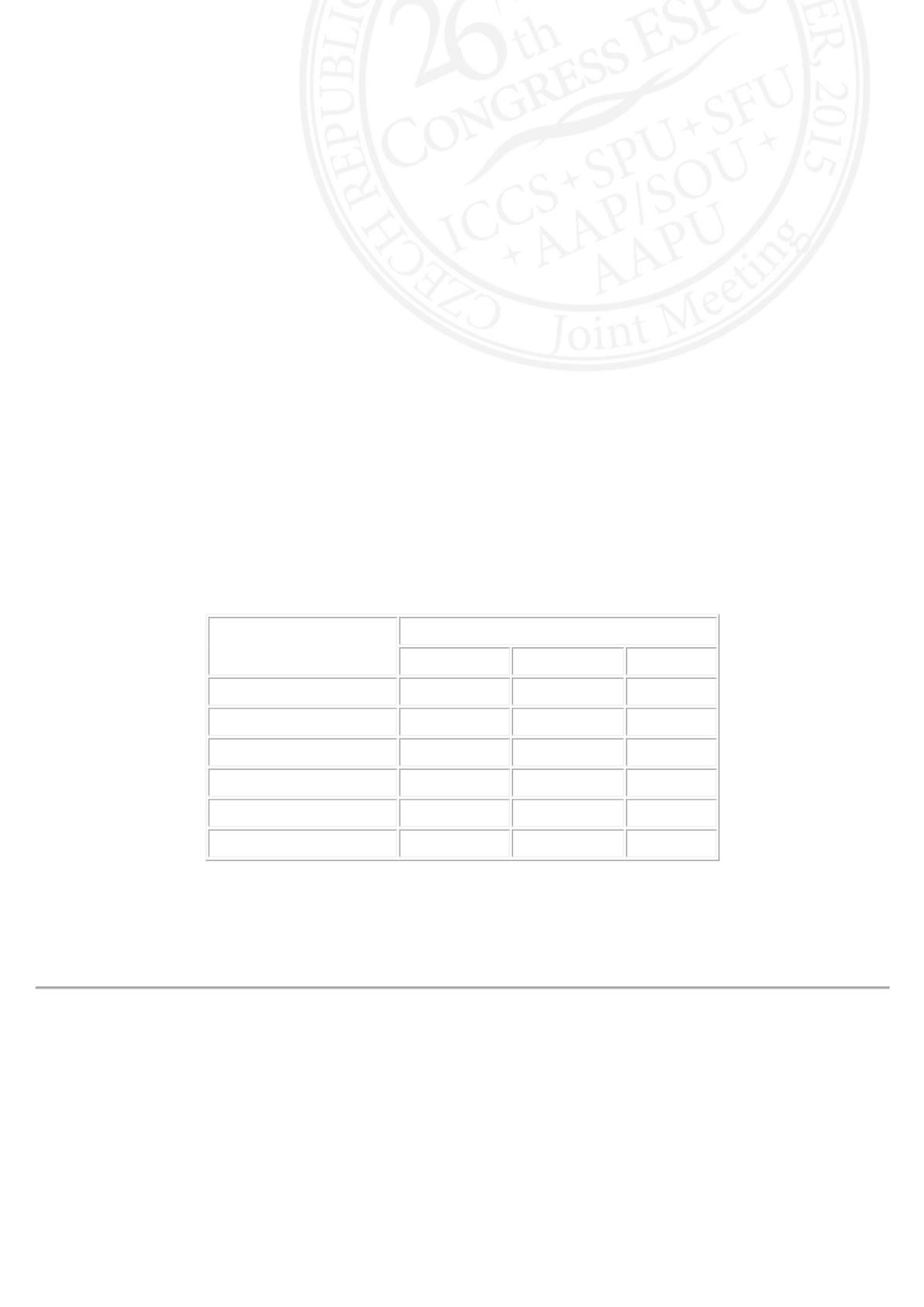

15:26 - 15:29
S27-4
(PP)
THE USE OF ANTICHOLINERGIC MEDICATION IN BOYS WITH POSTERIOR
URETHRAL VALVES
Massimo GARRIBOLI, Aurora MARIANI, Arash TAGHIZADEH, Jo CLOTHIER, Kalpana PATIL and Anne WRIGHT
Evelina London Children's Hospital, Paediatric Nephro-Urology, London, UNITED KINGDOM
PURPOSE
To review the efficacy of Anticholinergic medication (AC) in boys with Posterior urethral valves (PUV) with particular
reference to urodynamic outcomes.
MATERIAL AND METHODS
Retrospective review of invasive (IUD) and non-ivasive (NIUD) urodynamics of PUV boys who were commenced on AC
between 2006 and 2015. Data presented as median (range).
RESULTS
Twenty boys, age 48.5 months (15-67), were commenced on AC for incontinence (n=10, 50%) and renal impairment
(n=10, 50%). In 14 IUD were available pre- and post-AC, in 5 a combination of IUD/NIUD and in 1 NIUD only, an
average of 7months (1-39) post AC commencement. Oxybutynin was used in 16, modified-release oxybutynin in 2 and
tolterodine in 2. Bladder capacity (BC) increased by an average of 75mls (p=0.004), and PVR by 40mls (p=0.17). Clean
Intermittent Catheterisation was used by 6 boys prior AC and required in a further 3 after AC was commenced.
Maximum detrusor overactive (max DO) pressure decreased by an average of 40cmH2O (p=0.001) and voiding max
pdet by 58cmH2O (p=0.007). Presence of vescicoureteric reflux was demonstrated in 8 renal units (n=6) before AC
treatment and only in 3 post AC.There was no significant change in detrusor pressure rise at end-fill (p det end-fill) or
post treatment serum creatinine. (See table). Continence parameters were improved in 6/10 (60%) boys. 1 boy each
reported constipation, difficulty initiating stream and abdominal pain.
Pre- and post-AC treatment
Pre(range)
Post(range)
P value
BC (mls)
135(24-327) 210(59-571) 0.004
Max DO (cm H2O)
56.8 (0-117) 16.9(0-59)
0.001
max p det (cm H2O)
123(83-229) 65(34-127)
0.007
p det end-fill (cm H2O) 14.7(0-40)
14.9(0-33)
0.9
PVR (mls)
25(0-70)
65(0-290)
0.17
Creatinine (umol/l)
117(28-439) 124(33-451) 0.09
CONCLUSIONS
AC in boys with PUV is associated with favourable improvements in urodynamic parameters, clinical status and
manageable adverse effects, however an increased PVR may necessitate commencement of CIC.












